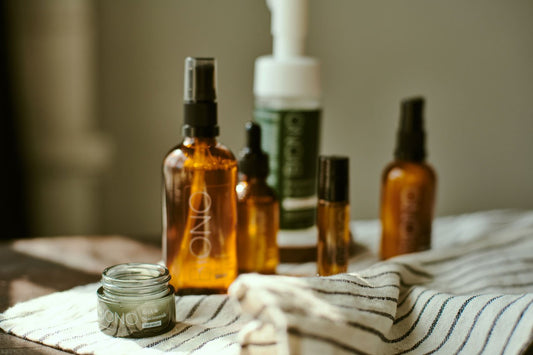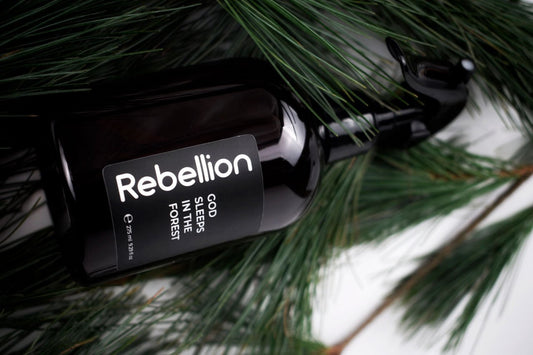
Comedogenic oils: what are they and how do they affect your skin?
What is comedogenicity?
Comedogenicity is the ability of certain ingredients to clog pores. When pores are clogged, blackheads, whiteheads, and other types of rashes may appear on the skin. Oils that have a high level of comedogenicity tend to cause these problems, especially in people with oily or combination skin.Why is this important?
Choosing the wrong cosmetic products can lead to deterioration of the skin. If you are prone to acne or have sensitive skin, the use of comedogenic oils can aggravate the situation. Therefore, it is important to know which oils are suitable for your skin and which ones should be avoided.Comedogenic ingredients create a barrier on the surface of the skin that prevents free breathing of pores and the removal of toxins. This can lead to the accumulation of sebum and dead cells, creating ideal conditions for the development of bacteria and inflammation. By choosing non-comedogenic products, you reduce the risk of rashes and improve the overall condition of the skin. Therefore, it is important to carefully study the composition of cosmetic products and avoid those that contain ingredients with high comedogenicity.
Comedogenic oils and their effect on skin health: Revealing Skin Care Secrets
The effect of comedogenic oils on the skin
Comedogenic oils are often included in cosmetic products, and their use can have a negative effect on the skin, especially for those who are prone to acne or have oily skin. These oils contribute to the accumulation of sebum and dead skin cells in the pores, which creates a favorable environment for the reproduction of bacteria and inflammation. As a result, the skin can become irritated, redness and rashes appear.
It is important to carefully read the composition of cosmetic products and avoid products containing comedogenic ingredients if you have problem skin. Instead, it is better to choose non-comedogenic products that do not clog pores and allow the skin to breathe. Pay attention to ingredients that have a light texture and absorb well, providing the skin with the necessary care without the risk of inflammation.
Popular comedogenic oils
- Coconut oil: Popular in hair care, but can clog pores on the face.
- Cocoa butter: Often used in moisturizers, but not suitable for oily skin.
- Olive oil: Good for the body, but may be too heavy for the face.
How to choose safe alternatives
List of safe oils for the skin:
- Jojoba oil
- Hemp oil
- Sunflower oil
How to reduce the comedogenicity of oils in your skin care routine
Using diluted oils One of the effective ways to reduce the comedogenicity of oils is to dilute them with other ingredients. For example, mixing coconut or olive oil with non-comedogenic oils such as jojoba or hemp oil can significantly reduce their ability to clog pores. You can also use these oils in smaller quantities or choose products where they are only one of the components and not the main ingredient. It is also important to pay attention to the application methods. For example, applying oil to still damp skin after cleansing helps it absorb better and reduces the risk of clogging pores. Regular exfoliation helps remove dead skin cells and prevents the accumulation of sebum, which also reduces the comedogenic effect of oils.Consideration of skin type when choosing oils
Your skin type is a key factor when choosing skin care oils. If you have dry skin, less comedogenic oils, such as avocado oil or sweet almond oil, can provide the moisture you need without the risk of breakouts. For combination or oily skin, it is worth giving preference to light, quickly absorbing oils, such as grape seed oil or sunflower oil.In addition, consider possible individual reactions to certain oils. Even if the oil is generally non-comedogenic, it may not suit your skin. It is recommended to start with small amounts and gradually increase the use, observing the reaction of the skin. This will help find the optimal balance and ensure effective and safe care.
The influence of seasonal changes on the use of oils for the skin
Seasonal changes can significantly affect the condition of your skin and its needs. In winter, the skin is prone to dryness due to low humidity and cold wind, so it is worth choosing more moisturizing oils, such as avocado oil or shea butter. These oils have a rich composition and are able to provide the necessary protection and hydration, creating a barrier that prevents moisture loss. In the warm season, when the skin can become more oily due to increased sweating, you should give preference to lighter oils, such as grape seed oil or jojoba oil. They are quickly absorbed without leaving a greasy shine, and help maintain moisture balance without clogging pores. This is especially important to prevent rashes on hot days.Combining oils with other cosmetic products
To achieve the best results, it is worth using oils in combination with other cosmetic products. For example, you can add a few drops of oil to your moisturizer to enhance its nourishing effect without the risk of overloading the skin. This approach allows you to maintain a balance between moisturizing and breathing of the skin, especially for those who are prone to acne.It is also important to integrate oils into your routine, taking into account the second steps of skin care, such as cleansing and toning. The use of mild, non-comedogenic cleansers will help prepare the skin for oil application, ensuring its cleanliness and ability to better absorb useful substances. Such a comprehensive approach will help you achieve healthy and radiant skin, minimizing the risk of problems.










